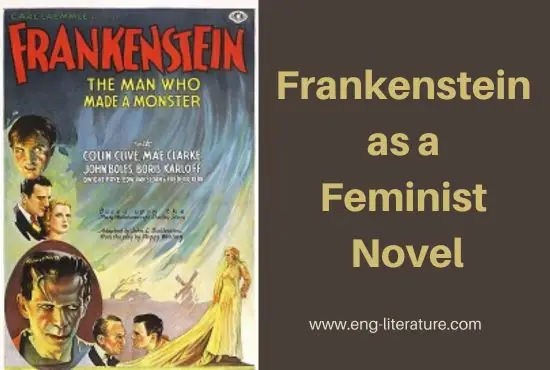Frankenstein as a Feminist Novel
Frankenstein, written by Mary Shelley, is a novel often associated with the Gothic genre. However, the novel can also be viewed as a feminist novel, exploring the themes of gender inequality, patriarchal society, and the struggles faced by women during the time of its publication. The novel showcases the struggles that women face in a male-dominated society, and the implications of such marginalization. Throughout the novel, Mary Shelley portrays her protagonist as an independent and strong-willed woman, and she uses her characters to challenge and dismantle conventional gender norms.
One way in which Frankenstein can be read as a feminist novel is through the character of Elizabeth, who represents a traditional view of femininity as gentle, nurturing, and supportive. However, feminist critics argue that Elizabeth’s role is limited and constrained by the societal expectations of women at the time. She is essentially a passive character who exists only to serve the needs and desires of the male characters, particularly Victor Frankenstein.
The novel highlights multiple instances of the patriarchal society in which the female characters exist. Shelley’s inclusion of the character of Justine highlights the woman’s place in society as scapegoats for male transgressions. Justine is being accused of murder solely based on the fact that she was around the crime scene at the time of the murder. This character reflects the prejudice and bias that women face in a society that considers them inferior. Additionally, Victor Frankenstein’s mother is portrayed as an educated woman who can write and preach, which Shelley believed would be considered unorthodox for a woman of her time.
One of the main themes in Frankenstein is the idea of power and control. The novel looks at the ways in which men in society hold power over women, and the consequences that arise from this inequality. This is especially evident in the roles of women in the novel, who are given little agency and are often treated as objects by the male characters. For example, Elizabeth Lavenza, the adopted sister and eventually wife of Victor Frankenstein, is portrayed as being passive and obedient to the will of the male characters around her. In contrast, the monster created by Frankenstein is made to challenge the patriarchal order, as he attempts to gain control over his own life and seeks to reject the role assigned to him by society.
In addition to gender inequality, Frankenstein also examines the impact of scientific advancements on society. The novel suggests that scientific progress can be harmful when it is used to create monsters that ignore morality and ethical concerns in the pursuit of knowledge. Shelley’s novel can be seen as a critique of the scientific and social norms of the time that often marginalized and excluded women from participating in scientific endeavors.
Also Read:
Furthermore, the novel explores the concept of motherhood and the absence of maternal figures in society. Shelley herself had experienced the loss of her mother at a young age, and this experience is reflected in the novel. The absence of a mother figure in the novel is significant, as it highlights the position of women in society as being defined solely through their relationships with men. This is particularly evident in the portrayal of Victor Frankenstein’s mother, who is depicted as the idealized image of the “angel of the home”. The lack of a maternal figure in the monster’s life is symbolic of the discrimination faced by women in patriarchal society.
, the female characters in the novel, such as Elizabeth and Justine, are punished and destroyed by the male characters’ actions. This can be read as a commentary on the limited agency and power that women had in society at the time, as well as a critique of the way in which women were often scapegoated and blamed for the actions of men.
the creation of the monster can be read as a metaphor for the ways in which women were excluded and marginalized in society. The monster is created through Victor’s desire to create life, and yet he is immediately repulsed by the creature’s appearance and rejects him. This can be seen as a reflection of the way in which women were excluded from the public sphere and denied the right to participate in many areas of life.
In conclusion, Frankenstein is a strong feminist novel for the significant role it plays in bringing into focus the societal norms of Shelley’s time. The novel portrays women as essential partners, capable of influence and agency, rather than as powerless, subservient beings. Additionally, it’s safe to say that Shelley also challenged the stereotype of the “mad scientist,” who is more often than not cast as male, and demonstrated that women could create as well. Shelley was a pioneer in the exploration of the role of women in science fiction, and her attention to these themes has cemented her as an essential feminist writer in the realm of Gothic literature.

Hello, Viewers! Besides being the Founder and Owner of this website, I am a Government Officer. As a hardcore literary lover, I am pursuing my dream by writing notes and articles related to Literature. Drop me a line anytime, whether it’s about any queries or demands or just to share your well-being. I’d love to hear from you. Thanks for stopping by!
